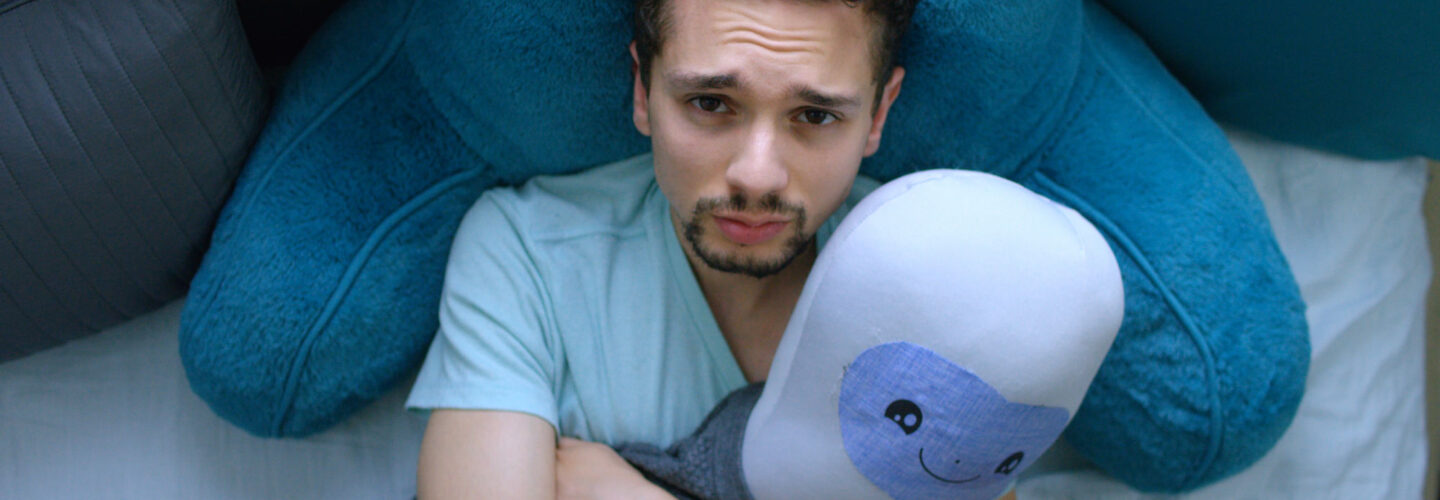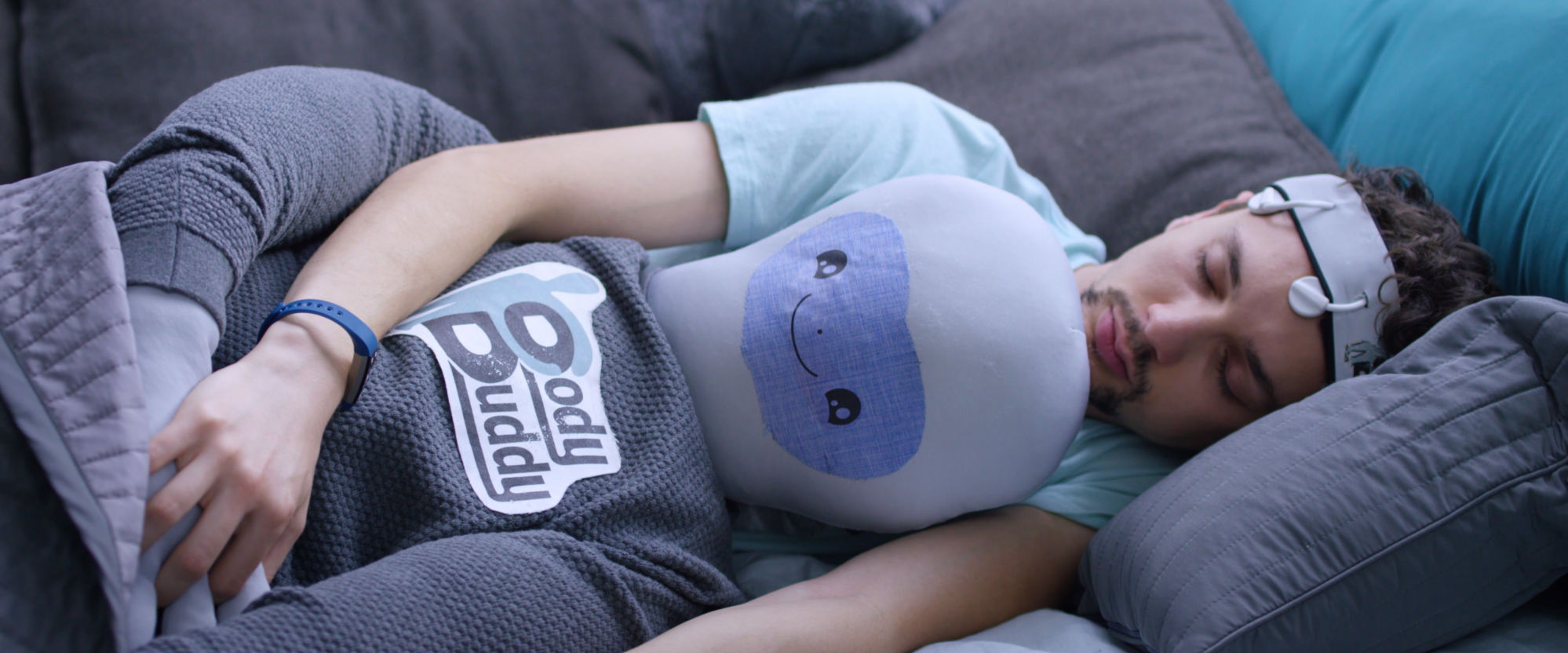
Let’s face it, dating has always been a somewhat daunting task but in our world of ever-increasing digital connections, pursuing an IRL date (Tinder hookups don’t count!) can feel like a Herculean act of courage. If that’s the state of play today, what’s it going to be like for the VR-wearing, digital assistant dependent, dating generations to come? Well if it’s anything like Ryan Turner’s fun sci-fi comedy short A Date in 2025, we can at least look forward to calming effects of on tap liquid antidepressants. I caught up with Ryan to talk future junk food and finding emotional connections in a tech-saturated world.
How did you come to team up with Writer Matthew Hart on A Date in 2025 and what was it about the concept that appealed to your filmmaking sensibilities? To what extent did you and Matthew continue to collaborate and shape the story throughout production?
I met Matthew through a networking event when I first moved to LA. We bonded over our love for comedy and as a writer, he brought me some sketches he wanted to film. Our first collaboration was Playbot Jr., a sketch where a child’s robotic toy spirals out of control. We worked together a few more times after that – he would write the projects and I would direct them – but both of us wanted to make long-form narrative work.
For over a year, Matt sent me different short film pitches. We would follow an idea for awhile, but we’d always find a problem with it and lose excitement. After months of back and forth, he sent me the first draft of A Date in 2025. I immediately was drawn to it. I’ve always been interested in sci-fi as a genre and I loved the short’s exploration of humanity and our relationship with/growing dependence on technology. It reminded me of Her or a short episode of Black Mirror.
Tonally, this early draft was very different from the final film. It was more dramatic and methodical than comedic. The tone was quite depressing and really hammered in Daniel’s isolation and loneliness. Daniel used virtual reality to escape his world instead of augmented reality and we planned to shoot the virtual world with POV GoPro shots. After test-shooting the short, however, both Matt and I realized we weren’t excited about seeing another depressing sci-fi film. We wanted to make something fun.
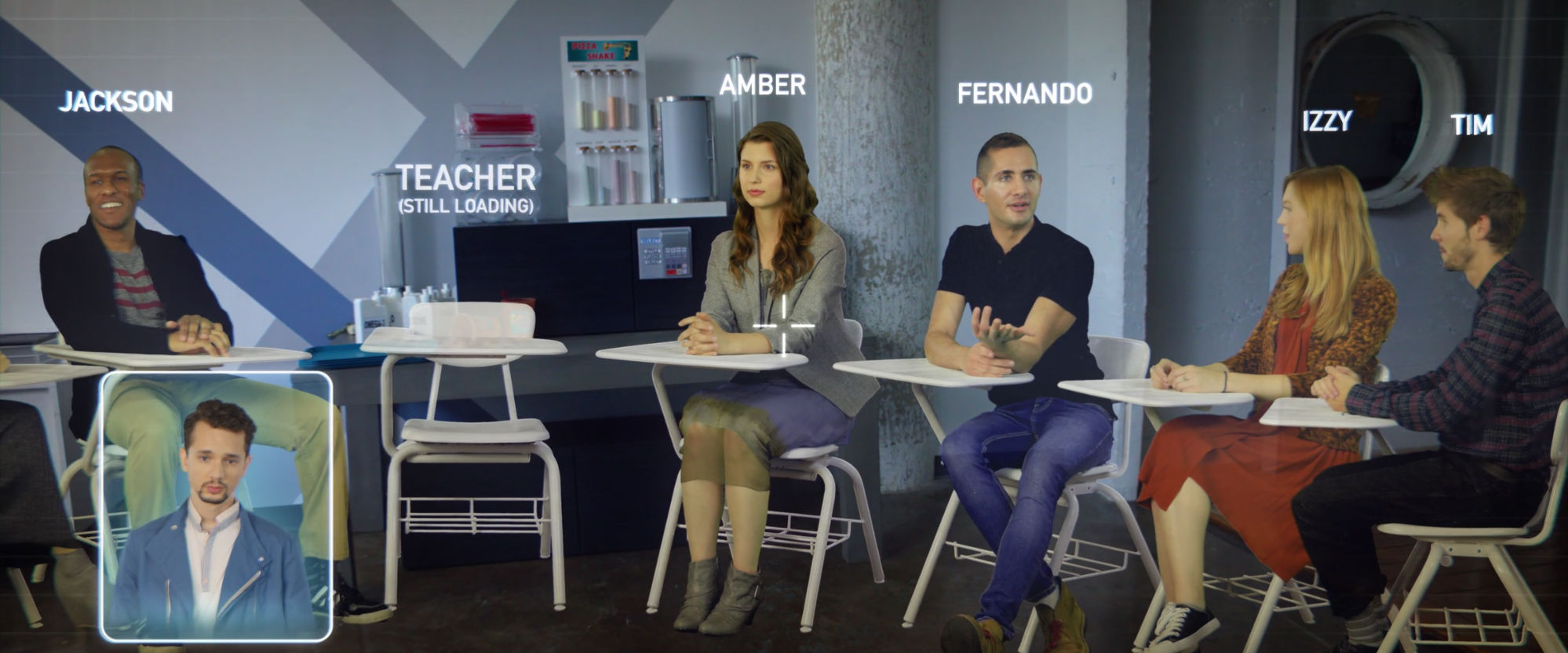
With this in mind, we dived back into the script. We cut the VR scenes and instead added in a virtual classroom (this was inspired in part by my research into VR companies and where they said the future was heading). Counselor went from a smarter Siri/Alexa to a quick-witted nagging mother type. We fleshed out the world more and forced each other to justify every decision. We wrote and rewrote the short a number of times, but the only scene to stay constant was the final hug scene. That played out exactly as it was written in the beginning.
As we moved through production, Matt was very hands-off. We worked together in pre-production, but when it came to shooting he let me make all of the decisions, using the script as the roadmap. One of the most challenging scenes was Daniel’s breakdown in the apartment. We were running out of time and had to combine shots, so Sasha had to perform the entire scene in a oner. We got three chances, and he killed it every time.
In post production, I would edit the film and bring Matt in for feedback. We’d sit together and go through takes, and would brainstorm solutions to various problems. We have a very different approach to storytelling, but that difference provided a very unique end product that we’re both very happy with.
The playfully snarky Counselor is responsible for much of the comedy in the film. How did you direct Amy Shiels’ vocal performance to hit the right comic beats especially as it had to fit with Sasha Feldman’s already filmed performance?
As said above, Counselor’s tone was changed multiple times throughout our script. We had early drafts where Counselor was exclusively robotic and didn’t have much personality, but as we pushed the short more towards a comedic direction, Counselor began to really come to life. I was initially afraid of making her too human, but Matt assured me that would not be a problem – it would come down to the performance of our actress. A huge science fiction fanatic, Matt followed the Elon Musk school of thinking: it’s only a matter of time before robots rule the world.
The name Counselor was inspired by Star Trek and Matt’s initial vision for the character was very monotone and American. I, however, loved the idea of a proper British accent – a Mary Poppins style robot. I liked the idea of making her a motherly-type figure. She wants what’s best for Daniel, but she also knows how many times he watches virtual porn and eats pizza shakes. The comedy, then, came from her omniscient knowledge of everything Daniel does. He can’t get away with anything because she is the center of his life. Everything he does runs through her, and she’s not afraid to lay on the cold hard truth.
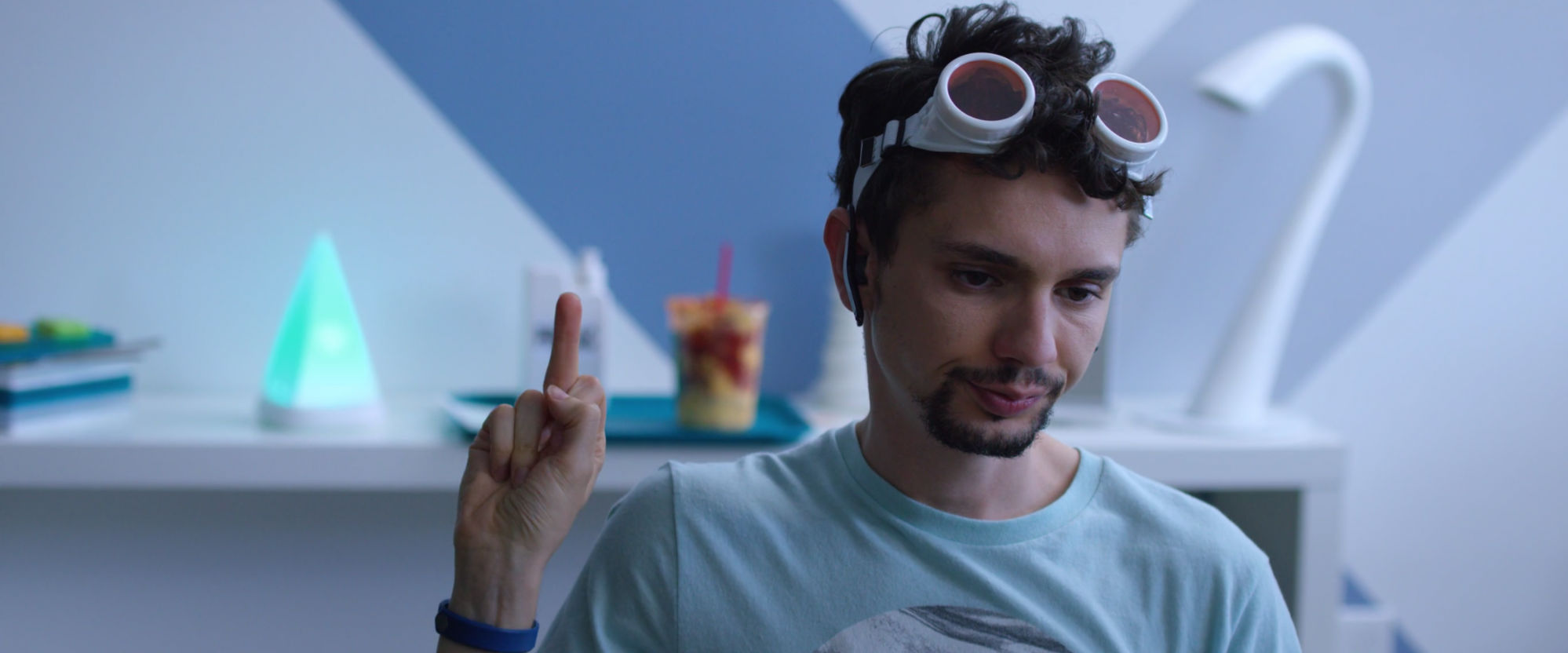
She wants what’s best for Daniel, but she also knows how many times he watches virtual porn and eats pizza shakes.
On set, our 1st Assistant Director Jonathan Betzler performed all of Counselor’s lines with Sasha. He did a wonderful job of hitting the right notes so Sasha had something to react with. Sasha’s character could easily be unlikeable, he sits around all day, watches virtual-porn, and drinks pizza shakes. It’s a true testament to Sasha, however, that you want to root for this guy right from the beginning. He really made you feel for his struggles.
Prior to shooting, Sasha and I talked extensively about his approach to the role. Daniel does want to be better, but when Counselor tells him to ask Amber out on a date, he treats it the same as if he was told to clean his room. There’s a lot of comedy in his reactions and annoyance with Counselor’s lines.
When it came time for casting Counselor, my first and only choice was Amy Shiels. She is a friend of both Sasha and mine, and she was happy to do me a favor by being in this short. A very talented actress, she immediately understood what we were going for and made choices that not only brought the words to life – but really added a lot of heart to the character. Amy knows Sasha, so she had a lot of fun performing with both a personal and playful tone. So many people have told me they’d love their own Counselor and that’s all because of Amy.
Funny note: Sasha is my roommate, and he bought an Alexa shortly after shooting. His interactions with Alexa made A Date in 2025 feel way too real!
There are a lot of fun little future living elements here, how did you define and create the near future design aesthetic of Daniel’s world?
First off I want to give a huge credit to our Production Designer Tiff Smith. While Matt and I had a lot of ideas, it was Tiff that really brought the world to life, both in color scheme and through the practical props. She was the mastermind of the world and we could not have done it without her.
Initially, Matt and I had two very different views on the future. In my opinion, 2025 wouldn’t look that much different than the world does now. If we look back in time 10 or even 20 years, apartments aren’t radically different and we were still eating pretty much the same stuff we do now. I wanted to avoid the ‘flying cars’ or ‘hoverboard’ tropes from other sci-fi films and really ground our film in reality. Matt, on the other hand, loves sci-fi and wanted to see a fun futuristic world. In his opinion, everything should be different. He took inspiration from shows like Futurama and wanted to hit that look and feel. After all, that’s the beauty of science fiction!
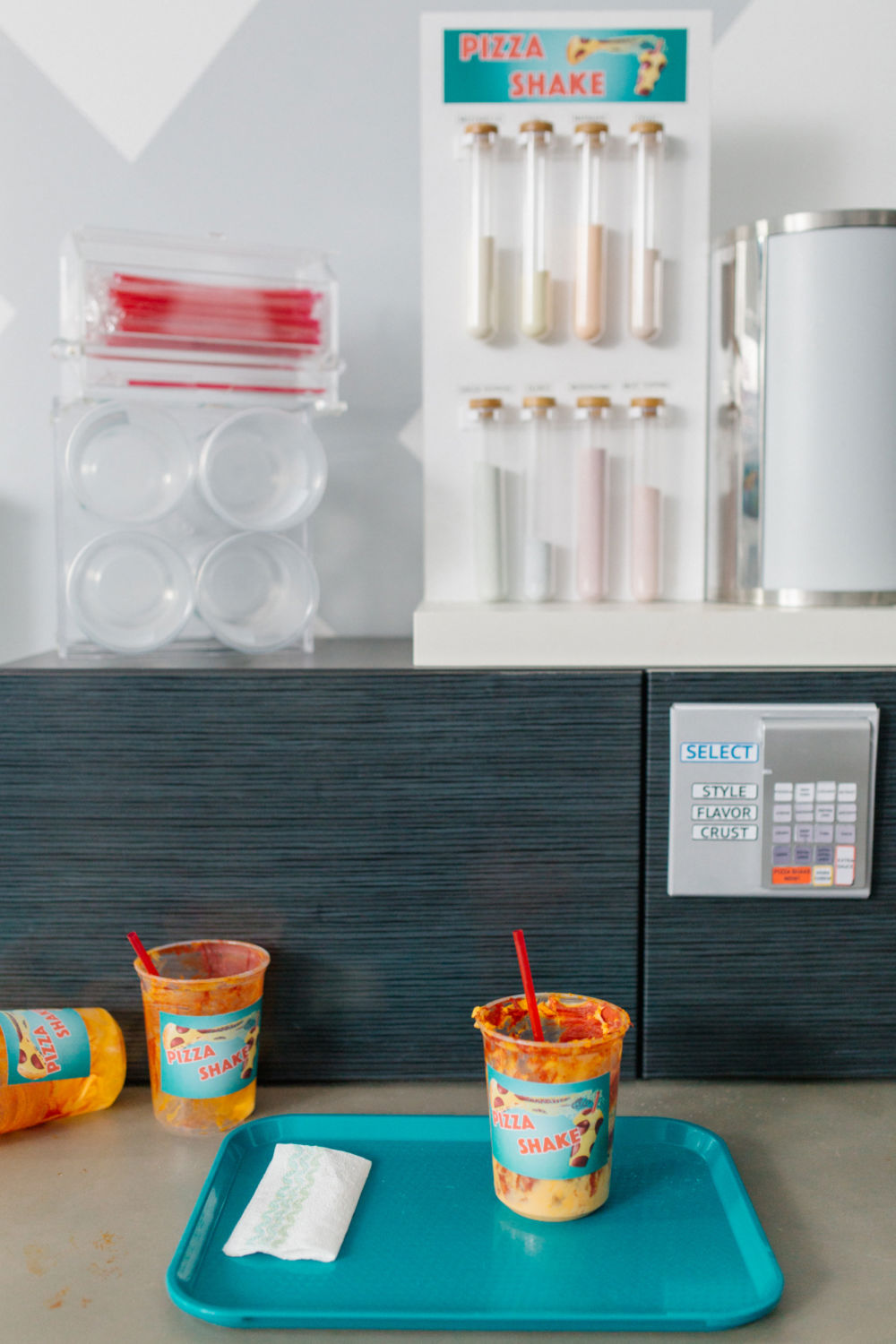
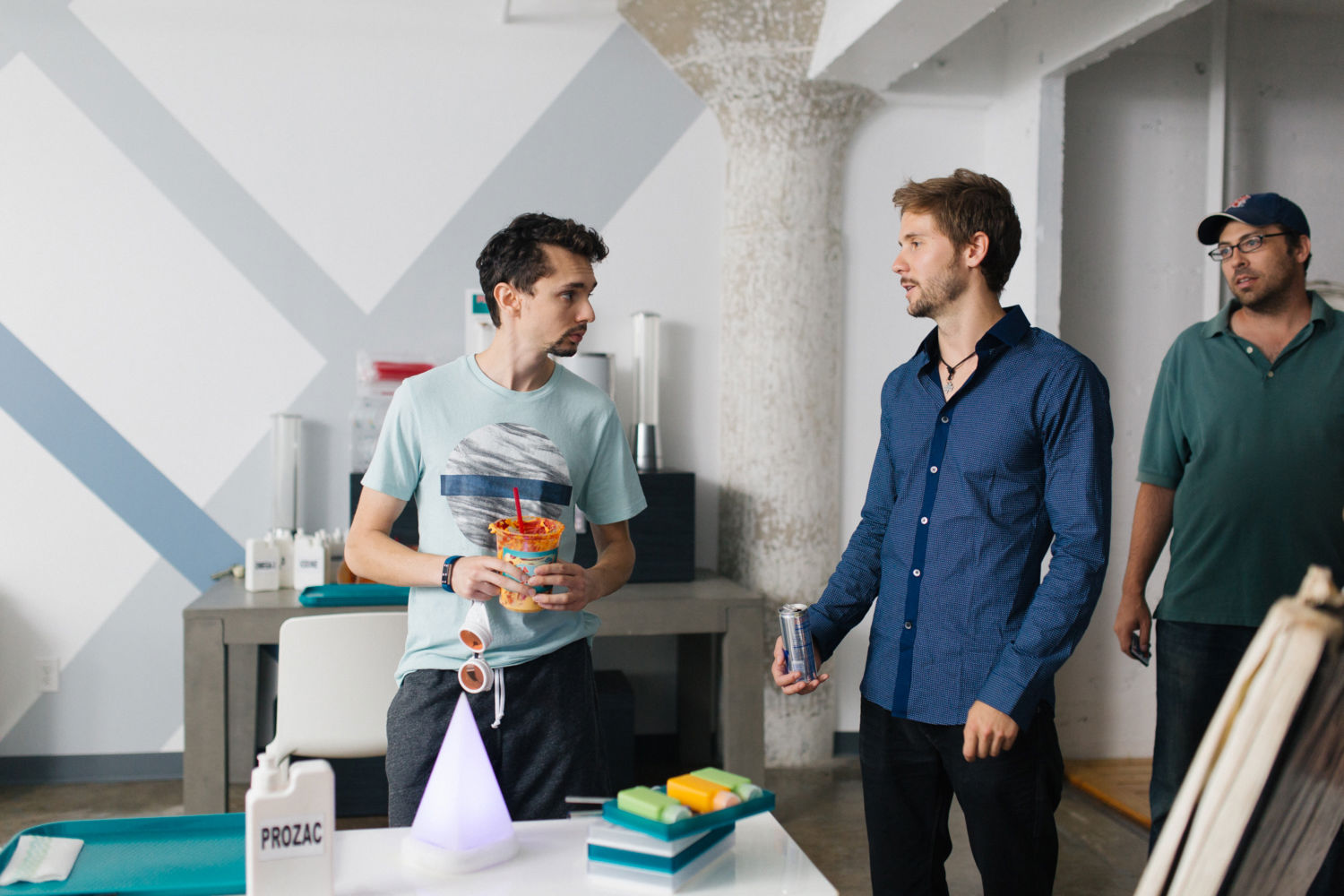
Through this conflict, we reached a nice middle ground. We decided to approach the world with everything the same but with tiny shifts. For example, the white walled apartment with diagonal decals or lights that look a little bit out of the ordinary. When it came time to lock in Daniel’s morning routine, I figured he’d just eat cereal but Matt wanted something more. After looking at companies like Soylent in Silicon Valley (where your entire meal is in the form of a smoothie), Matt’s sister came up with the idea of a junk food version of that; thus the pizza shake was born. We then followed that path and created a Back to the Future style pizza shake maker complete with a magical microwave. It wasn’t grounded, but it was definitely fun!
Matt came up with the idea of BodyBuddy to further hit on Daniel’s isolation. How sad is it that he has to plug into a pillow in order to get any sort of human connection. We researched a bunch of different cuddle pillows – most of which were from Japan – and Tiff eventually settled on filling up a bodysuit with stuffing and adding a face. It worked like a charm.

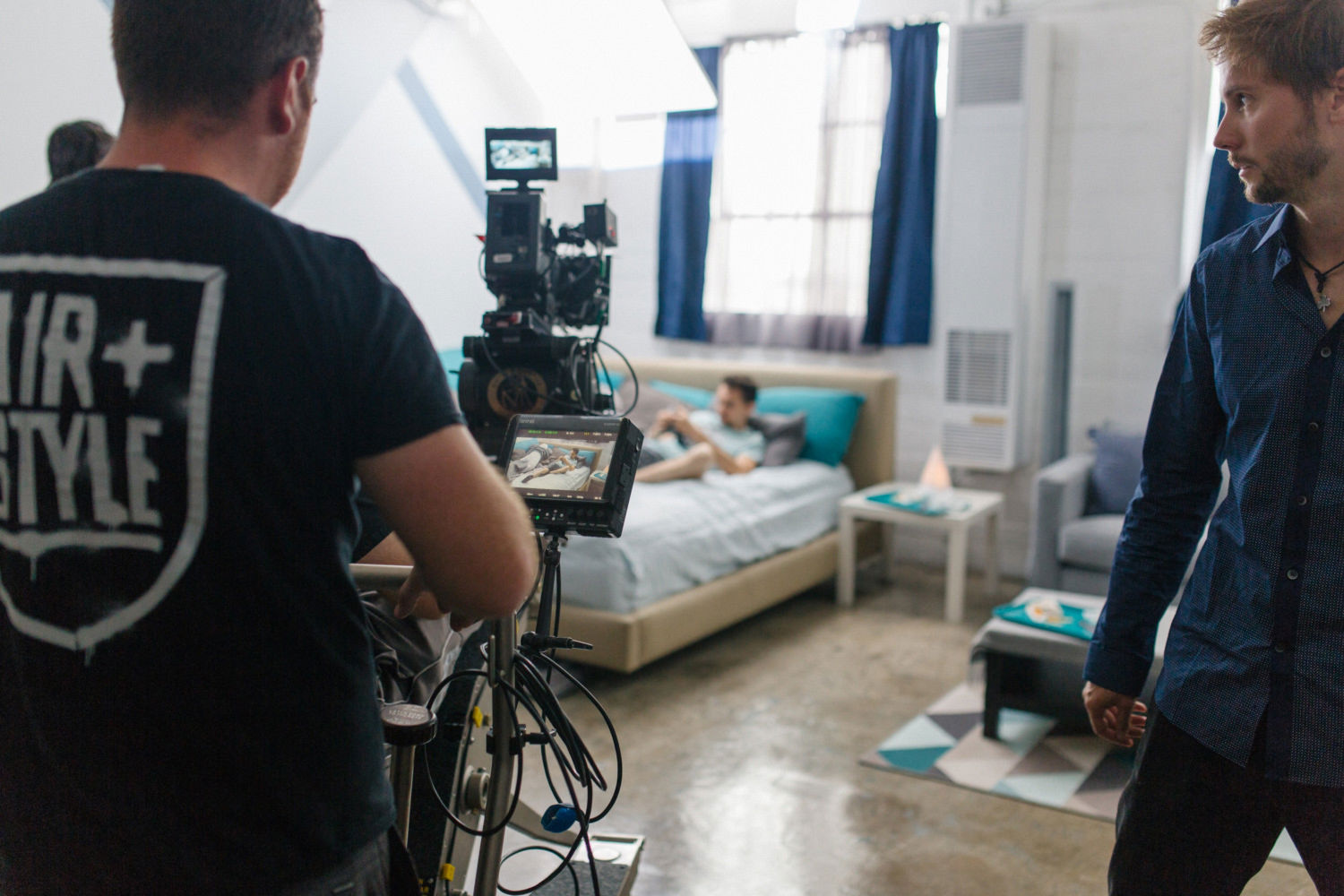
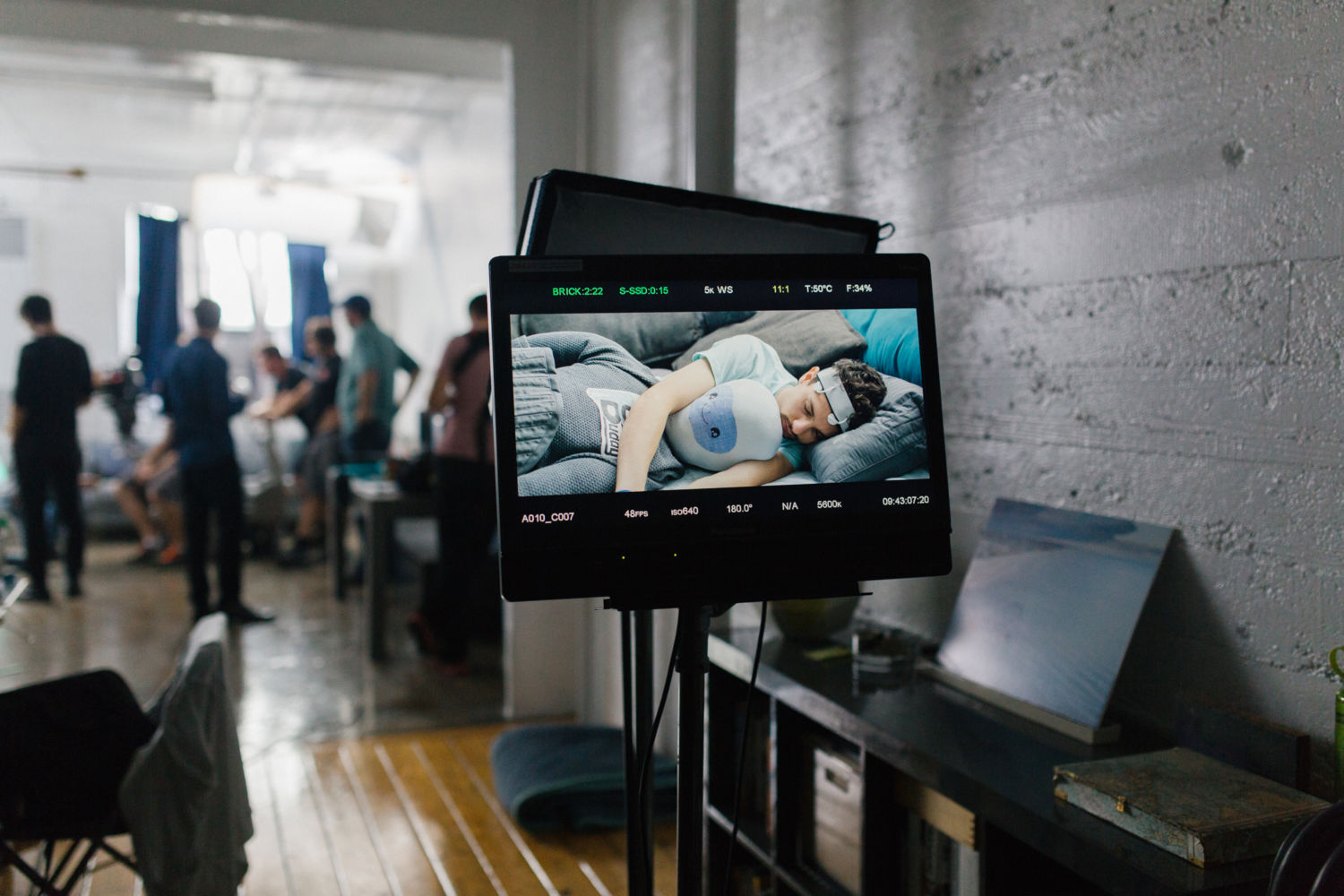
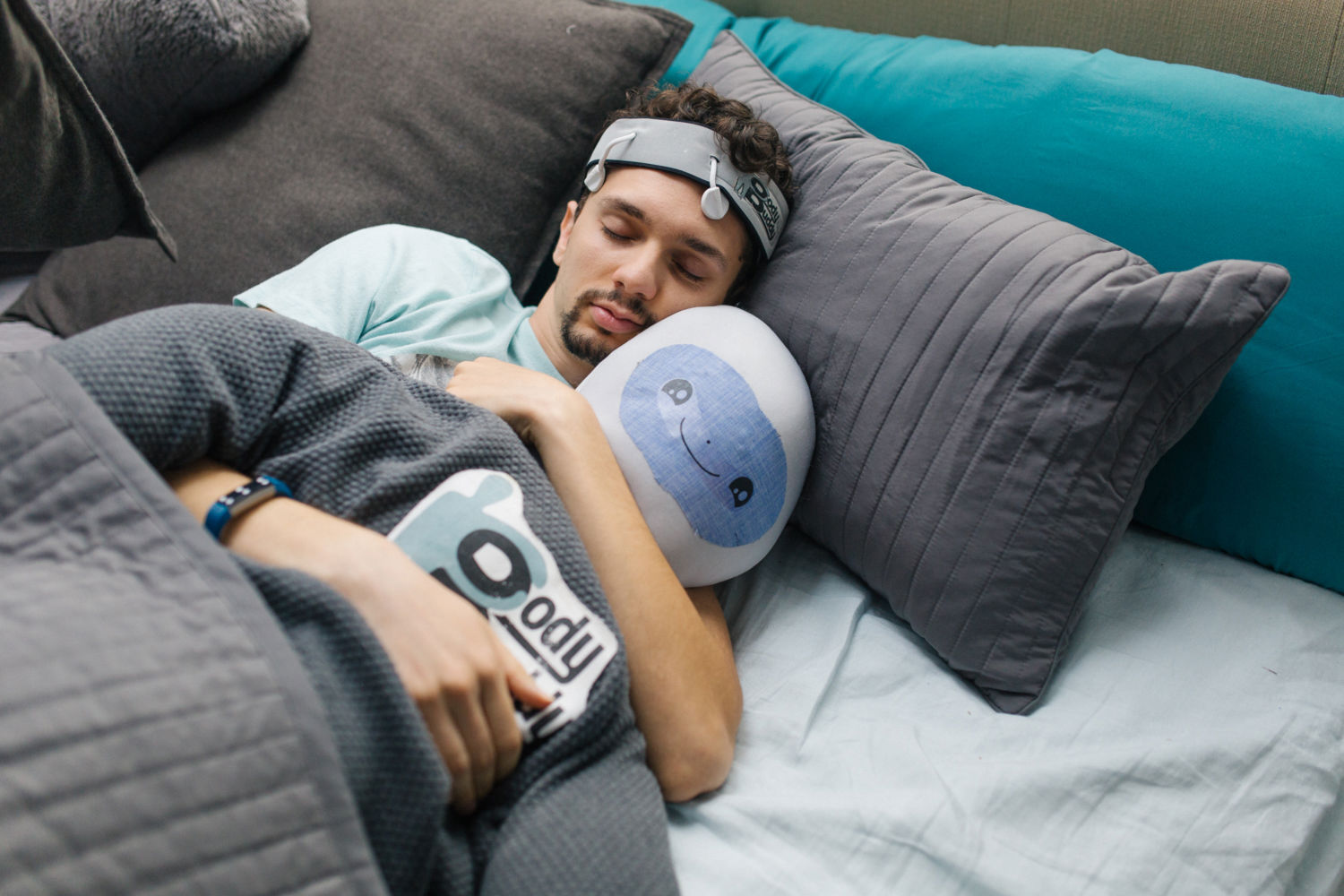

We didn’t have a large budget, so solutions like this were a necessity. Our VR goggles were actually just some plastic steampunk goggles from China. The only prop we really had to sacrifice on was a treadmill. We initially wanted something like this but in the end, we just took an elliptical and removed the handles. I would not recommend working out on that thing.
The design of Counselor was always meant to have Illuminati-type imagery. Matt initially wanted the eye to float above the pyramid, but I thought that was too much. Tiff molded a tall pyramid shape from plastic and bought an LED light so we could have practical color shifts as Counselor’s mood changed. It wasn’t until post that we finally locked in her look.
I loved the short’s exploration of humanity and our relationship with/growing dependence on technology.
Our final scene was a big challenge in terms of location. We spent the whole short in an apartment, but when we finally got outside we needed something amazing. We couldn’t just settle for any location. Thankfully, Matt knew of a great building in Hollywood – Emerson College. As an alumni from Emerson in Boston, Matt reached out and got us in touch. We couldn’t have asked for a better building to shoot at. It was both grandiose and sci-fi at the same time. It really expanded our world in a way few locations could.
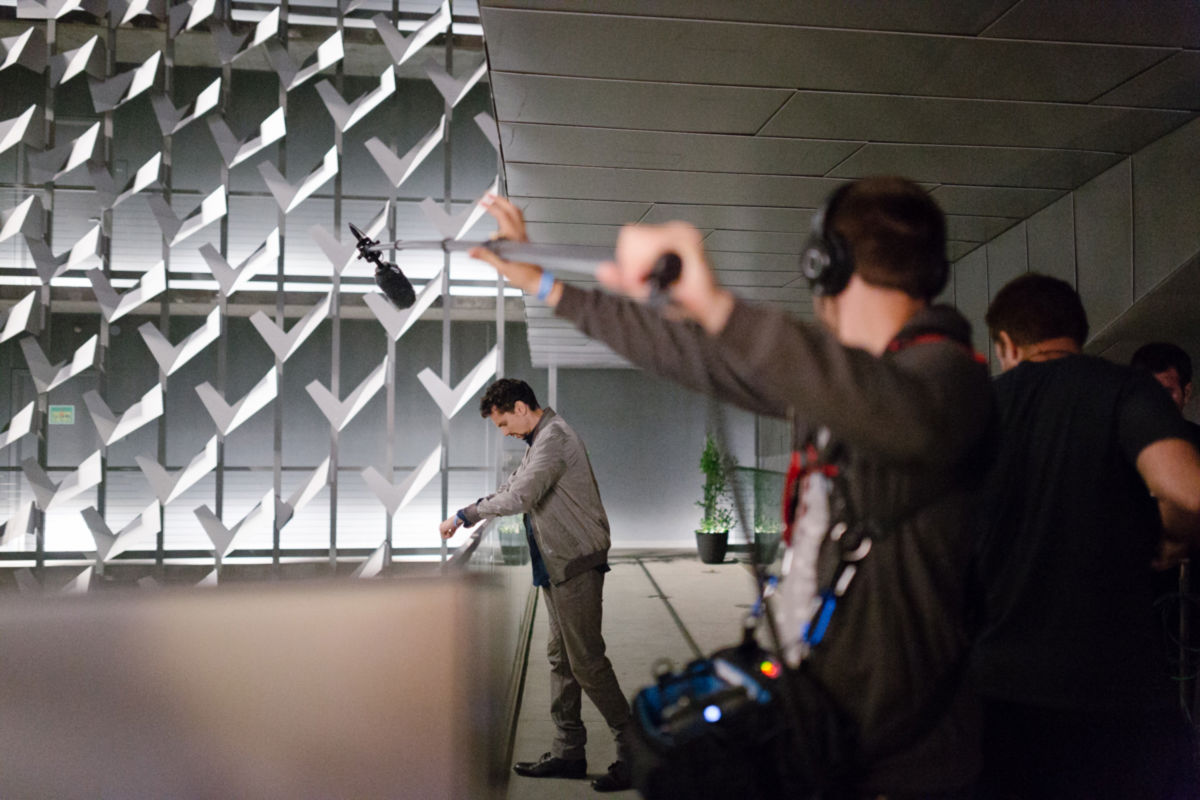
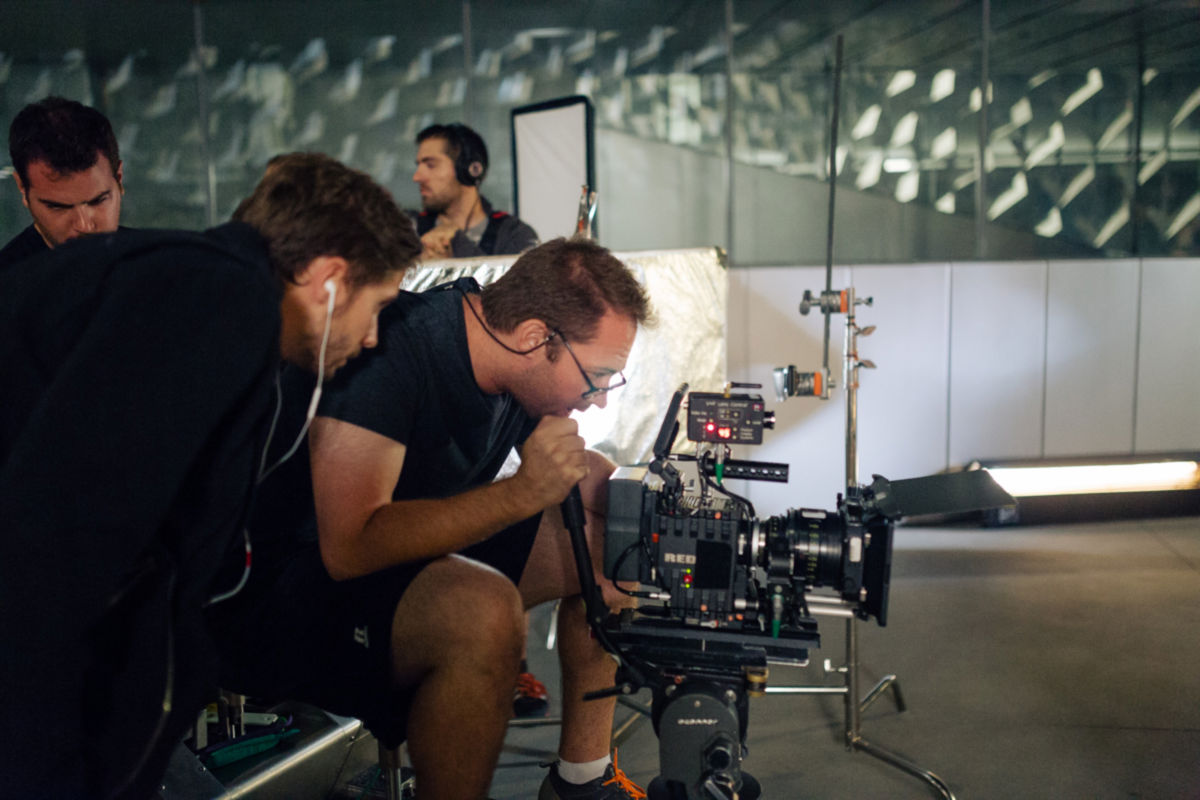
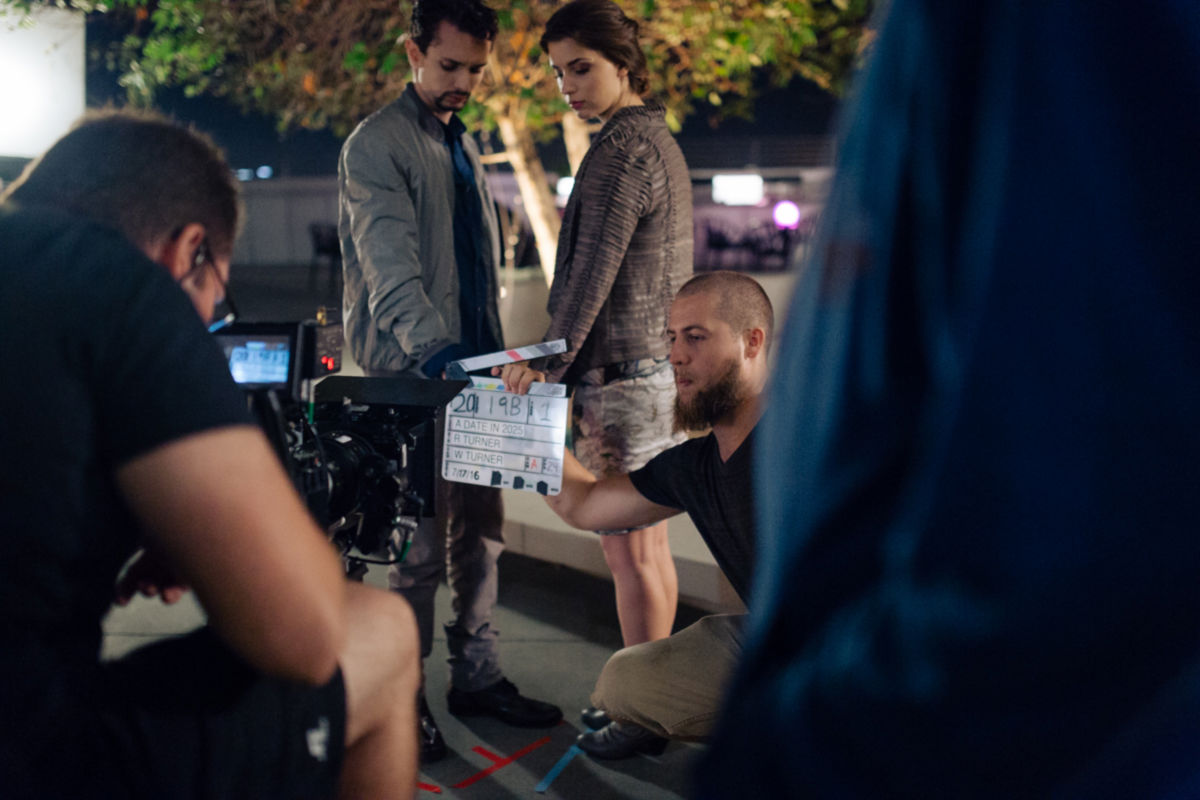
Did you need to modify your approach on set at all to ensure that you didn’t give yourself a VFX headache in post?
Well funny you should mention that! Prior to production, I had multiple calls with VFX houses attempting to figure out the best way to approach Counselor. Tiff had created our plastic pyramid model that lit up practically, but we had no idea what would go on the surface. To cover our bases, I put motion trackers all over the pyramid so we could have an easy time in post. This was recommended to me by the VFX houses. We also shot at a high frame rate to eliminate motion blur for tracking.
Turns out, however, that those trackers provided more headaches than anything. Because we had a practical light, the trackers were quite difficult to paint out, and our VFX artist Doug Herman had to manually recreate the different sides of the pyramid on his end. Particularly difficult was the cell speech, but thankfully Doug found a way around it.

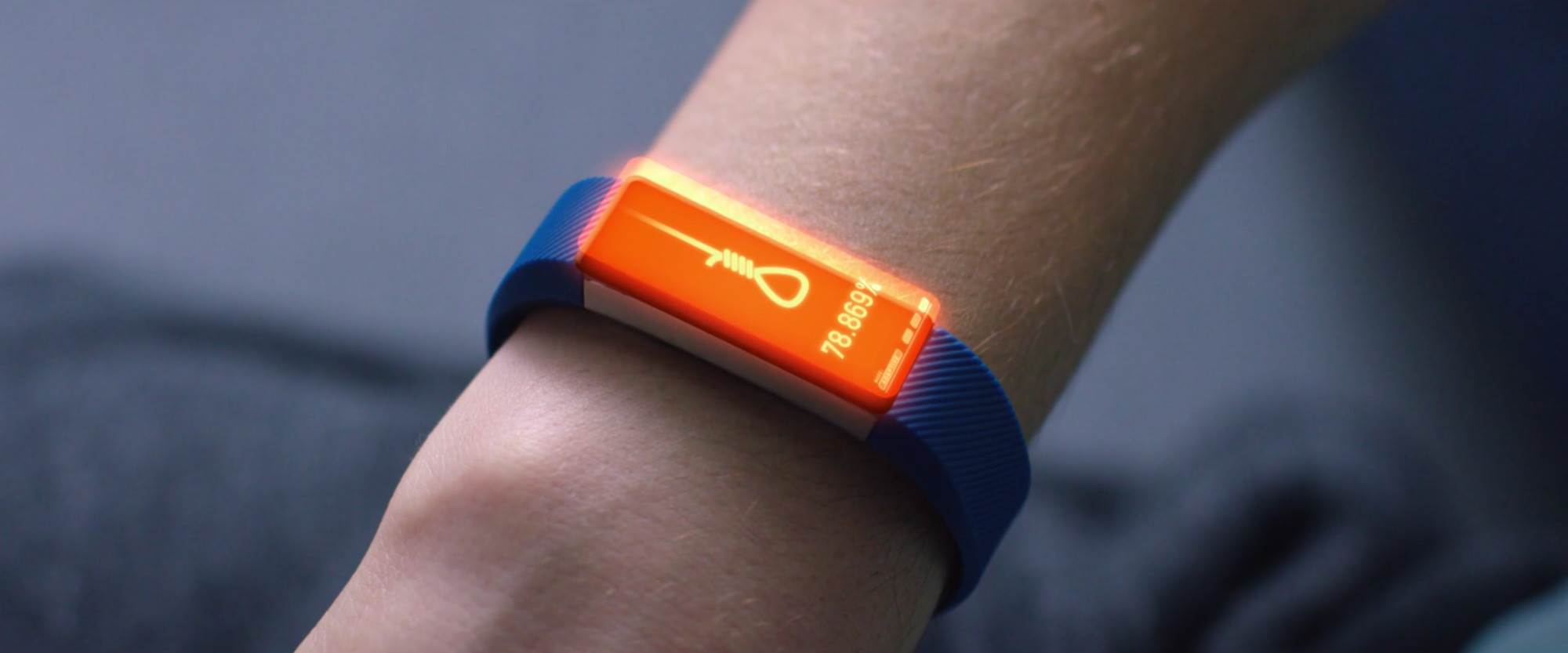
Speaking of Doug Herman, he’s another person that the short couldn’t have been made without. He was a one-person VFX monster. He not only created Counselor and the watch, but built out the digital classroom and created the titles and credit sequence. So many things could’ve gone wrong in VFX, but Doug brought his A-Game.
Counselor is in nearly every shot of the film, and Doug was diligent in creating quality every time. He not only had to track on the VFX, but he had to animate Counselor’s features. He told me that he would look in the mirror and repeat Amy Shiels’ lines to get inspiration for what Counselor would do. With Amy’s voice and Doug’s VFX, Counselor became what you saw in the final film. I think she is a very endearing character.
Aside from the tracking, were there any other elements of the film that were particularly challenging?
A big challenge was budget. Matt raised enough money to fund production but was tapped out by the time it got to post. We had decided early on that we’d put the money towards production and aim to fundraise afterwards, so we made a Kickstarter to fund post. It was a challenging campaign, but thanks to the generosity of friends and family we reached our goal and then some! Post production took over three months – with Doug working on the project in his free time – but it was well worth the wait.
I want to mention another very important person for this project: our Composer Leo Kaliski. He created a score that felt both familiar and futuristic at the same time. He created themes for Amber, Daniel and more, and when they finally hug in the end, Leo’s score brings it all together. His job throughout the movie was to set the tone and he did a great job of that.
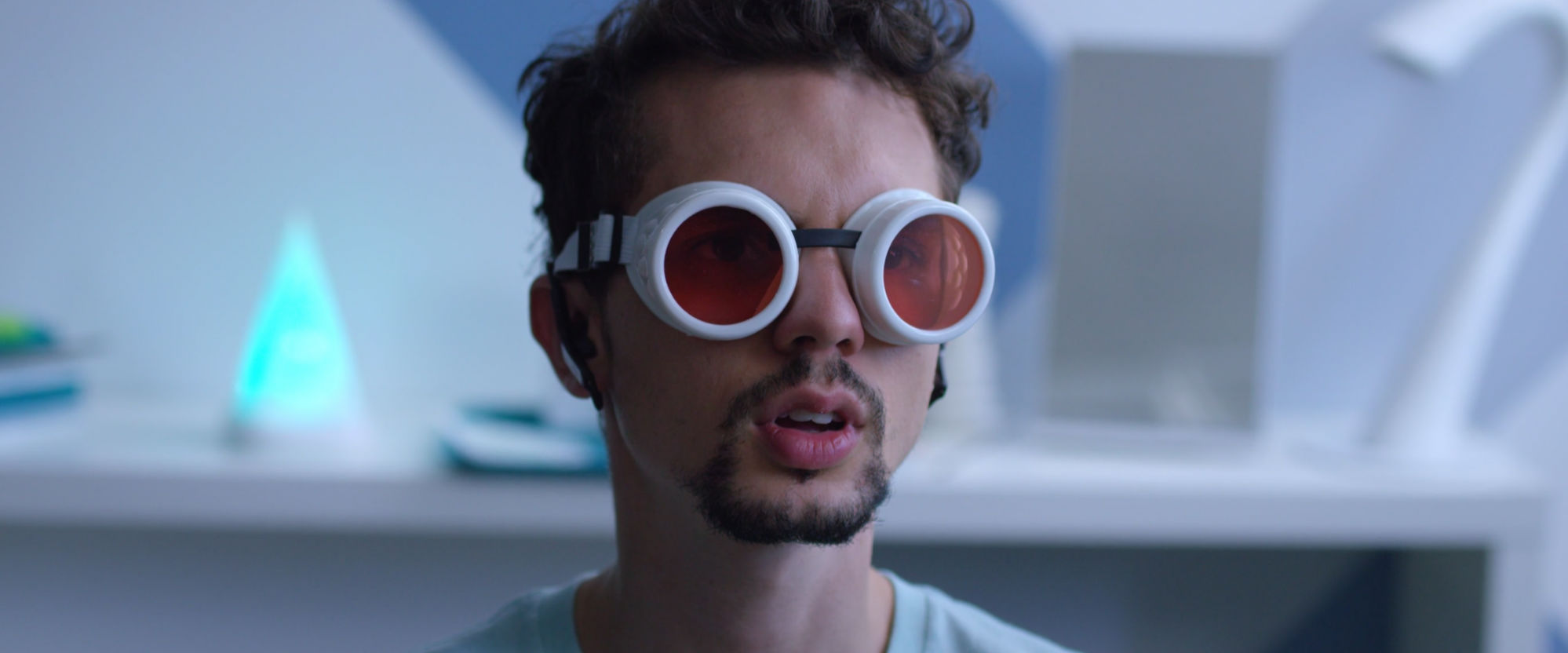
One scene that was quite challenging was Daniel’s breakdown. We ended up adding in some new Counselor lines and more to help motivate Daniel’s shift, but tonally Leo had to shift from a very quirky upbeat score to something darker and more morose. After much back and forth, Leo really helped the audience feel what Daniel was feeling.
Alon Wolman, our Sound Designer/Mixer also was a crucial part of the short. He helped build out the world through different sound effects. I especially enjoyed working with him to build out Counselor’s different sounds and shifts. They were a lot of fun.
What do you have coming up next?
I’m currently finishing up a new short film Pull Yourself Together (see the Kickstarter here) and also optioned a feature film script that I’m looking to take into production this year. Besides that I make a living as a comedy commercial director.

